Brand Launch: How to Launch a Brand That Stands Out
Launching a brand is an exciting and challenging journey. Creating a solid and memorable brand that resonates with your target audience is crucial in today's competitive market. But how do you build and launch a brand that will stand out from the rest? In this comprehensive guide, we'll walk you through the process step by step, from defining your brand's identity to creating a buzz-worthy launch strategy. Let's dive in!
Section 1: Define Your Brand's Identity
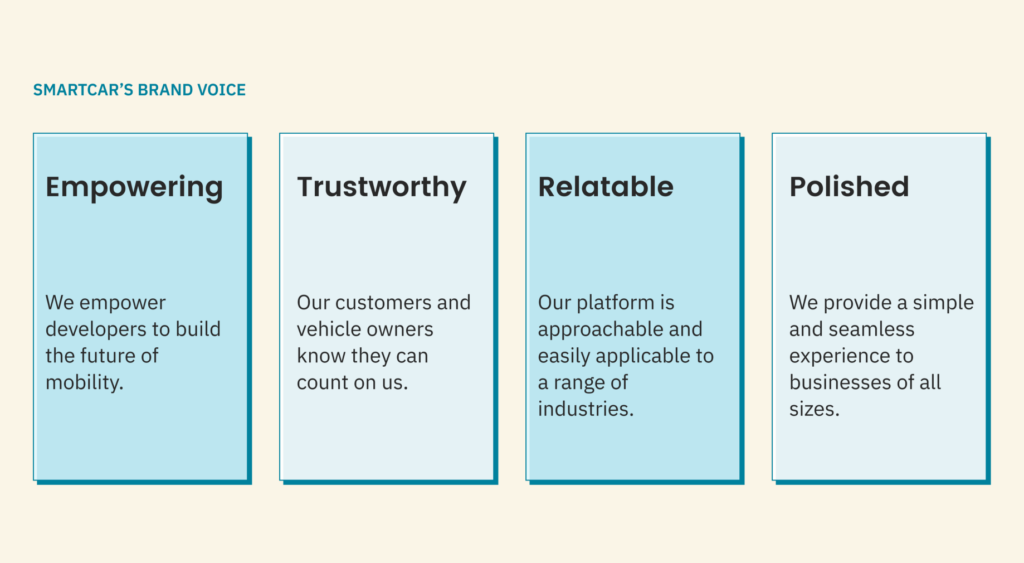
Understand Your Target Audience
Understanding your target audience is one of the most critical aspects of building a brand. Without a thorough understanding of your ideal customers, you may create marketing strategies and products that fall flat and fail to resonate with your target market. Therefore, taking the time to get to know your audience is crucial to creating a successful brand.
To begin with, it's essential to identify your consumer demographics. Demographics refers to the basic information about your audience, such as age, gender, income level, education level, occupation, and location. This information can help you create targeted advertising campaigns, set product prices, and determine where to focus your marketing efforts.
In addition to demographics, understanding the consumer's psychographics is equally essential. Psychographics refers to your audience's personality traits, values, interests, and lifestyles. This information will help you create messaging and branding that profoundly resonates with your target audience.
Another critical aspect of understanding your target audience is identifying their pain points. Pain points refer to your audience's problems and challenges that your product or service can solve. By understanding your audience's pain points, you can tailor your marketing messages and offerings to address these issues, making your brand more attractive to potential customers.
Finally, understanding your target audience's aspirations is also essential. Aspirations refer to the hopes, dreams, and goals of the consumer. By understanding what motivates them and what they aspire to achieve, you can create marketing messaging that resonates with them emotionally and connects them on a deeper level.
Establish Your Unique Selling Proposition (USP)
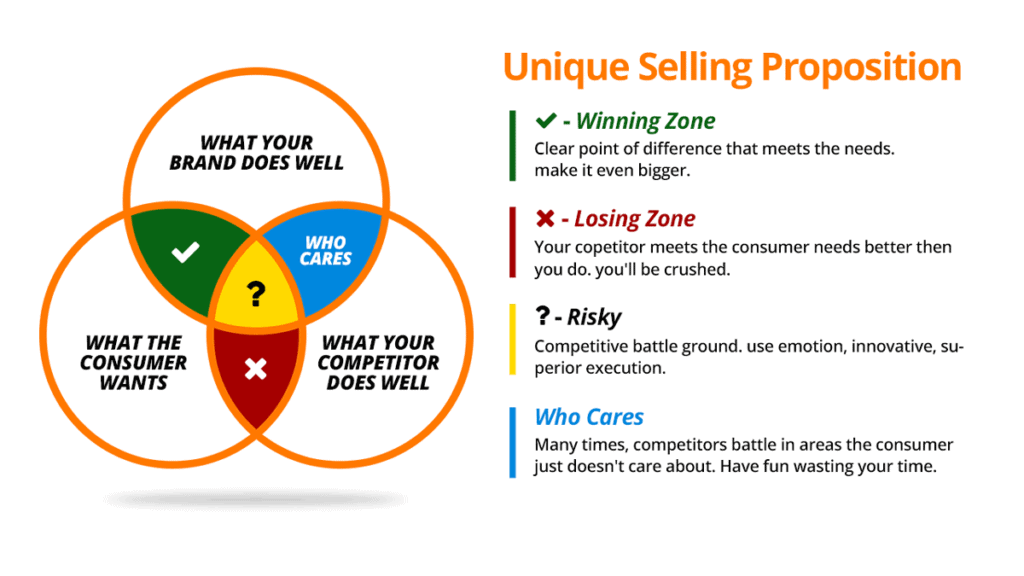
Establishing your unique selling proposition (USP) is crucial in building a successful brand. Your USP is the critical factor that sets you apart from your competitors and makes your brand stand out. It's the foundation upon which your entire marketing strategy is built.
To determine your USP, you must identify what makes your brand unique and how it solves a problem or fulfils a need better than anyone else. Consider product or service quality, pricing, customer service, and innovation.
Product or service quality is one of the most critical aspects of your USP. Your product or service should be of the highest quality and should provide value to your customers. You should demonstrate why your product or service is better than your competitors and how it uniquely meets your customers' needs.
- Amazon Kindle Edition
- Miller, Robert B. (Author)
- English (Publication Language)
Pricing is another critical factor to consider when establishing your USP. It would help if you determined whether you want to compete on price or whether you can charge a premium for your product or service based on its unique features and benefits. You need to ensure that your pricing is competitive and fair, reflecting the value of your product or service.
Customer service is another crucial factor differentiating your brand from your competitors. Providing excellent customer service can create a loyal customer base that will keep returning to your brand. You must ensure that your customer service is efficient, responsive, and helpful and that your customers feel valued and heard.
Finally, innovation is a crucial aspect of establishing your USP. You must demonstrate that your brand is forward-thinking and constantly innovating to meet your customers' needs. Whether through new product development, new technologies, or new marketing strategies, innovation is essential to staying ahead of the competition and building a solid brand.
Create a Compelling Brand Story

Creating a compelling brand story is essential to building a solid and memorable brand that resonates with your target audience. Here are some key points to consider when crafting your brand story:
- Connect emotionally: Your brand story should connect with your audience emotionally, tapping into their aspirations, fears, hopes, and dreams. Emotions are powerful motivators, and if you can create an emotional connection with your audience, you can build a loyal and engaged customer base.
- Convey values and mission: Your brand story should communicate your brand's values and mission clearly and authentically. Your values and mission are the foundation upon which your brand is built, and they should be reflected in every aspect of your brand, from your messaging and branding to your products and services.
- Highlight unique qualities: Your brand story should highlight what makes your brand unique and different from others in your industry. Whether it's your products or services, approach to customer service or company culture, your brand story should communicate your unique qualities and competitive advantages.
- Engage and resonate: Your brand story should engage and resonate with your audience, inspiring them to take action and become loyal customers. Your story should be relatable and relevant to your audience, inspiring and motivating them to connect with your brand on a deeper level.
- Be authentic: Your brand story should be faithful and true to your brand's personality and voice. Don't try to be something you're not or pretend to have values and qualities you don't. Authenticity is critical to building trust and credibility with your audience.
Section 2: Develop Your Brand's Visual Identity

Design a Memorable Logo
Your logo is an essential visual representation of your brand that communicates your brand's personality and values to your target audience. A well-designed logo can help your brand stand out in a crowded marketplace, increase brand recognition, and build brand loyalty. Here are some key points to consider when designing your logo:
- Memorable and straightforward: Your logo should be simple, clean, and easily remembered. A complex or cluttered design can be confusing and difficult to recognise, while a simple, streamlined design is likelier to stick in your audience's memory.
- Versatile for use across various platforms: Your logo should be universal and adaptable across multiple platforms, including print, digital, and social media. Make sure your logo can be scaled up or down without losing clarity or legibility, and consider how it will look in different colour schemes and backgrounds.
- Reflective of your brand's personality and values: Your logo should reflect your brand's personality and values. It should visually communicate your brand's essence through colour, typography, or imagery. For example, a brand that values simplicity and minimalism might opt for a clean and simple logo design. In contrast, a brand that values creativity and innovation might opt for a more dynamic and unconventional design.
- Timeless and enduring: Your logo should be timeless and enduring, able to stand the test of time and remain relevant and recognisable over the long term. Avoid trendy or faddish designs that may quickly become dated or irrelevant, and focus on creating a classic and enduring design.
- Distinctive and unique: Your logo should be distinct and unique, setting your brand apart from your competitors. Avoid designs that are too similar to other brands or that could be easily confused with another logo. A distinctive logo design can help you build brand recognition and loyalty over time.
Choose a Consistent Colour Scheme
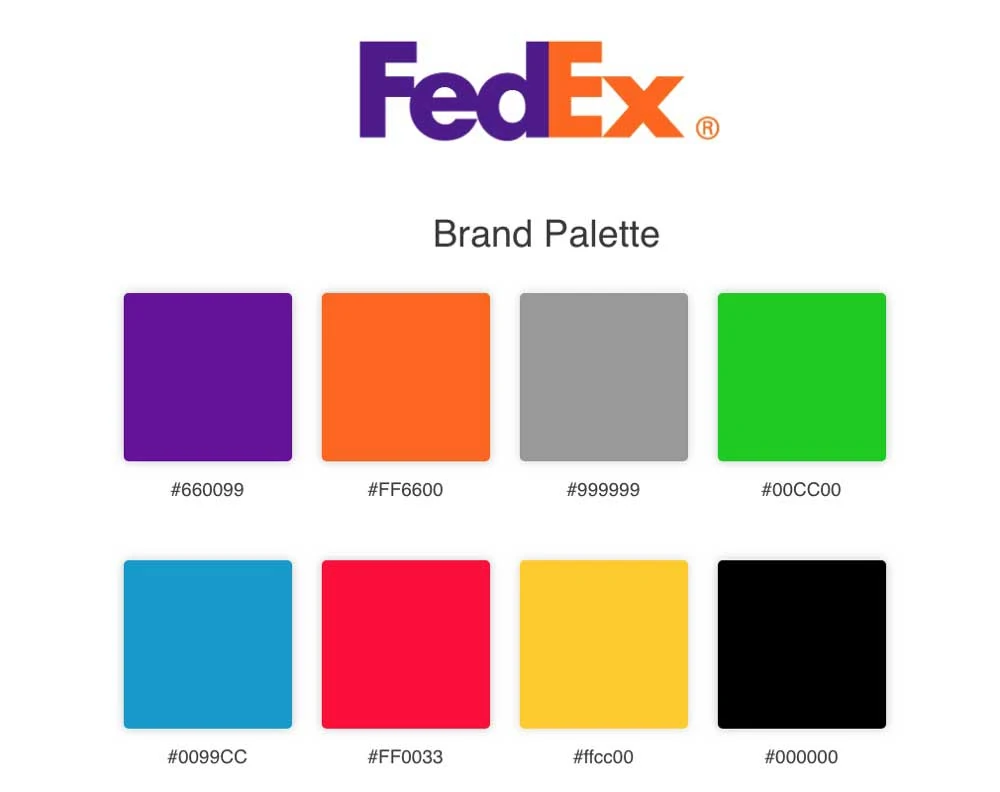
Choosing a consistent colour scheme for your brand is critical in building a strong and memorable visual identity. Colour plays a crucial role in how people perceive your brand, and a suitable colour scheme can help you communicate your brand's personality, emotions, and values to your audience. Here are some key points to consider when selecting a colour palette:
- Represents your brand's personality and emotions: Your colour palette should express your brand's personality and feelings. Different colours evoke different emotions and associations, and you should choose colours that align with your brand's personality and values. For example, suppose your brand is focused on health and wellness. In that case, you may opt for a colour palette that includes natural, earthy tones, while a brand focused on innovation and creativity opts for bold, vibrant colours.
- Visually appealing and cohesive: Your colour palette should be visually appealing and cohesive, with colours that work well together and create a harmonious overall look. A good colour scheme should include primary and secondary colours, shades, and tints that add depth and interest.
- Works well in various contexts: Your colour palette should work well in multiple contexts, including digital, print, packaging, and other brand touchpoints. Ensure your colours are legible and visible in different backgrounds and lighting conditions and translate well across various mediums.
- Consistent across all branding materials: Consistency is vital in colour schemes. Your colour palette should be consistent across all branding materials, including your logo, website, social media channels, packaging, and other touchpoints. Constant use of colour helps build brand recognition and reinforces your brand's visual identity in the minds of your audience.
Select Fonts and Typography
- Hardcover Book
- Johnson, Michael (Author)
- English (Publication Language)
Selecting the right fonts and typography is crucial in establishing a brand's identity and enhancing its visual appeal. Typography affects not only the aesthetics of a brand but also its readability and legibility. It is, therefore, essential to consider certain factors when choosing fonts.
The first factor to consider is legibility and readability. The chosen font must be easily read and comprehended, even from a distance. Consider factors such as the font's size, weight, and style, as they can impact the legibility of your content. Avoid using overly fancy or complicated fonts that may be difficult to read, especially in small sizes. Instead, opt for clean, simple, readable, and easily recognisable fonts.
Compatibility with your brand's personality is another important consideration when selecting typography. The fonts should reflect the brand's personality, values, and message. For instance, a modern and edgy brand may opt for bold and unique fonts, while a more traditional brand may choose more classic and conservative typography. Choosing fonts that align with the brand's personality and style is essential.
Consistency across all channels is another crucial factor to consider. The typography used on a brand's website, social media channels, and other marketing materials should consistently ensure brand recognition. Consistent typography helps to establish a cohesive brand image and ensures that the brand is easily recognisable across all mediums.
Section 3: Develop Your Brand's Voice and Messaging
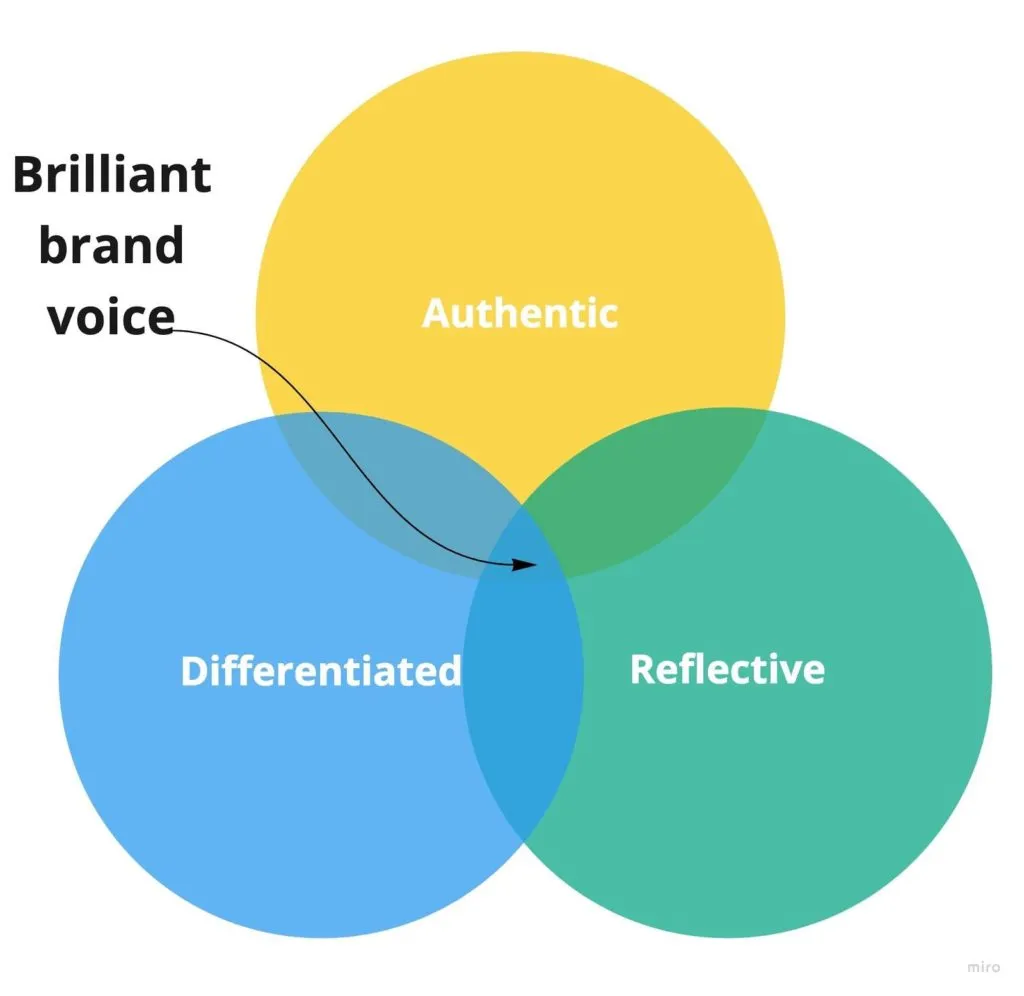
Determine Your Brand's Tone and Style
A consistent brand voice is essential in creating a solid and recognisable brand image. Your brand's tone and style should be reflected in all communication channels, including marketing materials, social media, and customer service interactions. When determining your brand's tone and style, consider the following factors:
- Think about the emotions you want to evoke in your audience. Do you want your brand perceived as fun, playful, serious, or authoritative? Your brand voice should align with the emotions you want to evoke in your audience.
- Consider the personality traits you want to convey. Do you want your brand to be perceived as friendly and approachable or professional and authoritative? Your personality traits should align with your brand's values and target audience.
- Determine the level of formality and professionalism you want to convey. Do you want your brand to be perceived as severe, formal, casual, and laid-back? The level of formality should align with your brand's industry, target audience, and values.
Considering these factors, you can determine your brand's tone and style and ensure consistency across all communication channels. A consistent brand voice helps to establish trust and credibility with your audience and ensures that your brand is easily recognisable and memorable.
Create a Brand Messaging Framework
Creating a brand messaging framework is essential in establishing a consistent and effective communication strategy. It involves developing key messages that clearly articulate your brand's unique selling proposition (USP), address your target audience's pain points, and align with your brand's values and mission. Here's how you can create an effective brand messaging framework:
- Start by clearly defining your USP. What sets your brand apart from your competitors? What value do you bring to your customers that no one else can? Your USP should be the foundation of your brand messaging framework and clearly articulated in your brand's communication.
- Identify your target audience's pain points. What are the challenges and problems your target audience is facing? How does your brand address these pain points? Understanding your target audience's pain points helps you tailor your messaging to their needs and makes your brand more relatable and relevant to them.
- Align your key messages with your brand's values and mission. Your brand's values and mission should guide all your communication efforts. Ensure that your messaging framework reflects your brand's values and mission to establish a solid and consistent brand identity.
- Create a messaging architecture that outlines the key messages, tone, and language to be used across all communication channels. This messaging architecture should serve as a guide to ensure your brand's communication is consistent and coherent across all mediums.
Develop a Content Strategy
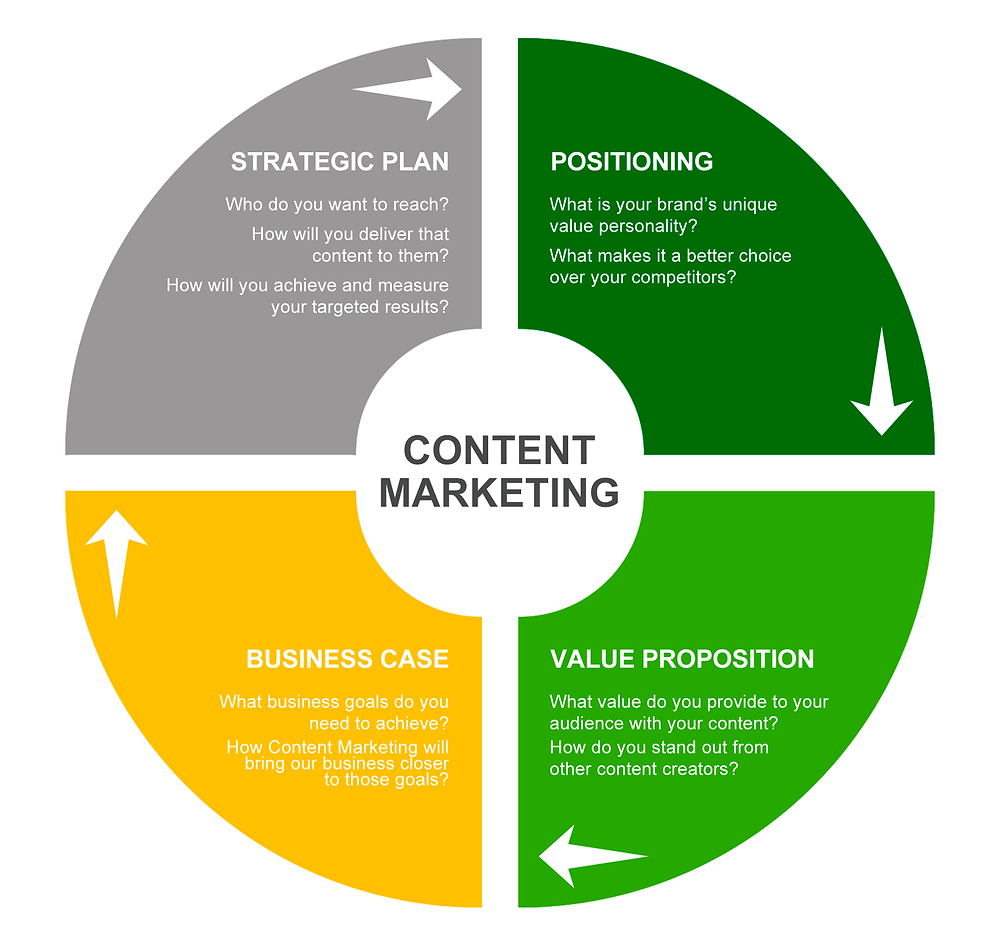
Developing a content strategy is critical in building brand awareness and engagement. A good content strategy should align with your brand's voice and messaging, provide value to your target audience, and utilise various formats to reach your audience effectively. Here's how you can develop an effective content strategy:
- Start by defining your brand's voice and messaging. Your content should reflect your brand's tone and style and align with your messaging framework. Ensure that your content is consistent with your brand's values and mission and that it speaks to your target audience in a way that resonates with them.
- Understand your target audience and what they want. What challenges and problems do they face, and how can your content help solve these issues? Research your target audience's interests, needs, and preferences, and tailor your content to provide value.
- Choose the correct formats to deliver your content. Utilise various formats, such as blog posts, videos, social media, podcasts, and webinars, to reach your audience effectively. Different forms will appeal to different segments of your target audience, and using a mix of formats can help you achieve a wider audience.
- Plan your content production and distribution. Create an editorial calendar that outlines the type of content you will produce, when it will be made, and where it will be distributed. This will help you stay organised and consistent in your content production and ensure that your content is distributed effectively.
- Track your content performance and adjust your strategy accordingly. Use analytics tools to track your content's reach, engagement, and conversion rates. This data will help you identify what is working and what is not and adjust your strategy to improve your content's performance.
Section 4: Launch a Brand Across All Touchpoints
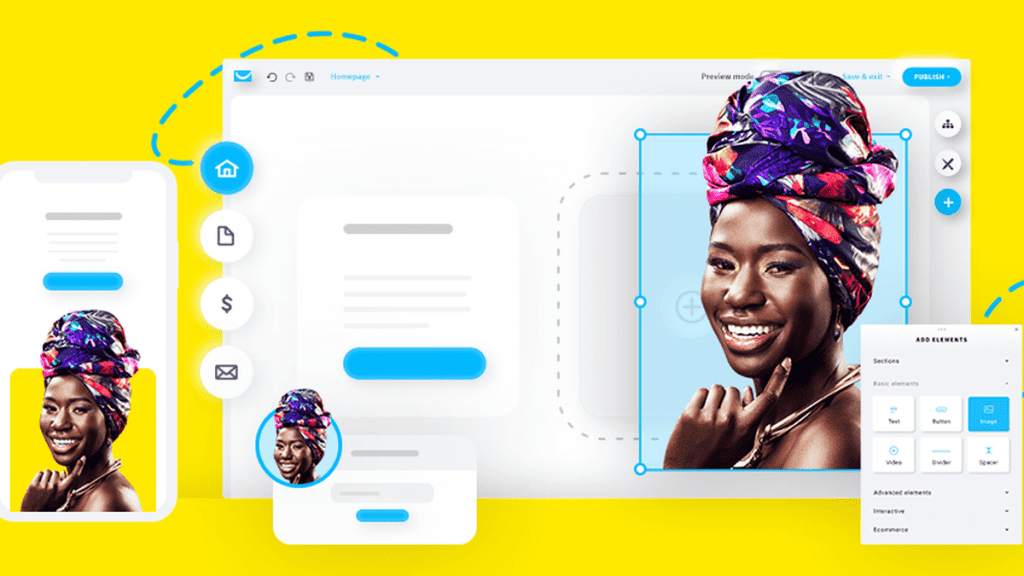
Update Your Digital Presence
To ensure your digital presence aligns with your brand identity, consider making the following updates:
- Logo, Colours, and Fonts: Ensure your brand's new logo, colours, and fonts are updated across all your digital channels.
- Brand Messaging and Voice: Incorporate your brand's messaging and voice into your website, social media profiles, and other digital channels to establish consistency and brand recognition.
- User Experience Optimisation: Optimise your digital channels to provide a seamless user experience. This includes improving the website's load speed, navigation, and user interface.
- Search Engine Optimisation: Ensure that your website is optimised for search engines by using relevant keywords, meta tags, and descriptions to increase your website's visibility and drive traffic.
- Consistency: Maintain a consistent look and feel across all your digital channels, including your website, social media, and other platforms.
- Mobile Optimisation: Ensure your website is mobile-friendly, as most online traffic now comes from mobile devices.
By updating your digital presence, you can establish a strong brand identity, increase online visibility, and attract potential customers to your business.
Incorporate Your Brand into Physical Materials
After updating your digital presence, you must ensure your brand identity is consistent across all physical materials. Consider the following ways to incorporate your brand into physical materials:
- Business Cards: Create new business cards that showcase your new logo, colours, and fonts. This will help establish consistency and brand recognition when networking.
- Packaging: Update your product packaging with your new brand identity. This can include using your new logo, colours, and fonts on the packaging design to create a cohesive and visually appealing look.
- Signage: Update your storefront and any other signage with your new brand identity. This can include using your new logo and colours to ensure brand recognition and consistency.
- Promotional Items: Create new promotional items, such as pens, notepads, or keychains, that showcase your new brand identity. This can increase brand recognition and serve as a reminder to customers about your business.
- Stationery: Use your new logo, colours, and fonts on all printed materials, such as letterheads, envelopes, and invoices.
By incorporating your brand into physical materials, you can establish a consistent look and feel across all customer touchpoints, increase brand recognition, and create a strong brand identity that sets you apart from the competition.
Train Your Team

A consistent brand representation across all customer touchpoints, including interactions with your team, is essential. To achieve this, provide your team with proper training on the following:
- Brand Values and Mission: Your team must understand your brand's values and mission to represent your brand consistently. This will help them to align their actions and decisions with your brand's purpose and ensure consistency in your messaging.
- Messaging and Voice: Your team should also understand your brand's messaging and voice, including the tone and language used in all customer communication. This ensures all customer interactions are consistent with your brand's personality and values.
- Customer Interactions and Experiences: Your team should be trained to provide consistent and positive customer interactions and experiences. This includes teaching them how to handle customer inquiries, complaints, and feedback while representing your brand's values.
- Brand Guidelines: Provide your team with clear brand guidelines to refer to when interacting with customers or creating marketing materials. This will help them to ensure consistency in brand representation across all channels.
- Role-Playing Exercises: Conduct role-playing exercises to help your team practice different customer scenarios and train them to respond consistently to your brand's values.
By ensuring your team understands and can consistently represent your brand, you can build a strong brand identity, improve customer loyalty, and create a positive reputation in the market.
Section 5: Plan a Memorable Launch Strategy

Set Launch Goals and Objectives
Before you launch a brand, setting clear and measurable goals and objectives to guide the entire process is essential. Setting these goals will help you to focus your efforts and resources, monitor your progress, and make necessary adjustments to achieve your desired outcome. Here are some important considerations when setting product launch goals and objectives:
- Brand awareness and reach: It's essential to establish clear goals for how you want to create brand awareness and reach. This might include strategies for building a social media presence, developing content marketing campaigns, or creating a public relations strategy to generate media coverage.
- Customer acquisition: Customer acquisition should be a primary goal for any brand launching in a new market. Establishing specific goals for acquiring new customers, such as a target number of sign-ups or sales, will help you determine the effectiveness of your marketing efforts and identify areas for improvement.
- Revenue generation: Ultimately, the success of your launch will depend on your ability to generate revenue. Setting revenue generation goals will ensure your marketing and sales strategies align with your financial objectives.
- Market penetration: Entering a new market can be challenging, especially if you are competing with established players. Setting market penetration goals will help you identify the critical performance indicators determining your success, such as market share or customer engagement.
In addition to these goals, it's essential to establish specific and measurable objectives to help you achieve them. For example, if your goal is to increase brand awareness, your objectives include growing social media followers by a certain percentage or generating a certain number of media mentions. You can track your progress and make data-driven decisions to improve your performance by setting clear goals.
Choose the Right Channels
Choosing the channels to reach your target audience is crucial for a successful brand launch. It's essential to consider which channels will be the most effective for reaching your specific audience and achieving your marketing goals. Here are some standard options to consider:
- Social media: Social media platforms are popular for reaching large and diverse audiences. Different platforms attract different demographics, so choosing the ones that align with your target audience is essential. For example, Instagram may be more effective for a fashion brand targeting a younger demographic, while LinkedIn may be more effective for a B2B company targeting professionals.
- Email marketing: Email marketing is an effective way to reach a targeted audience directly. Building an email list allows you to send personalised messages and promotions to your subscribers. Ensuring your email campaigns are engaging and valuable to your subscribers is vital.
- Influencer partnerships: Partnering with influencers can help you to reach a specific audience that aligns with your brand. Influencers can help you to build brand awareness and promote your products or services to their followers. Choosing influencers that align with your brand values and have an engaged audience that fits your target demographic is essential.
- Public relations: Public relations can help you to generate media coverage and reach a broader audience. Building relationships with journalists and securing coverage in relevant publications can build credibility and increase brand awareness.
- Content marketing: Content marketing involves creating valuable content that attracts and engages your target audience. This can include blog posts, videos, infographics, and more. Content marketing can establish your brand as a thought leader and generate leads.
When choosing channels, it's essential to consider the strengths and weaknesses of each option and how they align with your goals and budget. It's also important to measure the effectiveness of each channel and adjust your strategy accordingly. By choosing the proper channels and constantly evaluating your performance, you can ensure your marketing efforts are focused and effective.
Develop a Pre-Launch Buzz

Building anticipation and excitement before your official brand launch can generate buzz and interest among your target audience. Here are some tactics to consider when creating excitement for your launch:
- Teaser campaigns on social media can create excitement and anticipation for your brand launch. This could include posting cryptic messages or images on social media, teasing new products or features, or hosting a countdown to your launch date. Teasers can pique your audience's curiosity and keep them engaged until the official launch.
- Pre-launch email series: Email marketing can keep your audience engaged and informed leading up to your launch. Sending a pre-launch email series can provide valuable information about your brand, products, or services and build excitement for the official launch. This could include sneak peeks, behind-the-scenes content, or exclusive subscriber offers.
- Early access or exclusive offers: Offering early access or exclusive offers to a select group of customers can help to create a sense of exclusivity and generate buzz leading up to your official launch. This could include offering limited pre-orders or access to a beta version of your product or service.
- Influencer partnerships or endorsements: Partnering with influencers or securing approvals from industry leaders can help amplify your message and generate excitement among their followers. This could include inviting influencers to a pre-launch event, giving them early access to your products, or collaborating on content.
Creating a consistent and cohesive message across all channels is essential when building anticipation for your launch. Using multiple tactics and media, you can reach a wider audience and keep them engaged leading up to your launch. Remember to track your performance and adjust your strategy to meet your goals and objectives.
Plan a Launch Event

A launch event is a great way to generate buzz and excitement for your brand. It can provide a valuable opportunity to showcase your products or services to a targeted audience. Here are some considerations when planning your launch event:
- In-person or virtual event format: Depending on your goals and audience, you may choose to host an in-person or virtual event. In-person events can allow attendees to see, touch, and experience your products firsthand, while virtual events can be more accessible and enable you to reach a larger audience. Both formats can be practical if executed well.
- Engaging activities or presentations: Planning activities or presentations that showcase your brand and provide value to your audience is essential to keep your attendees engaged and interested. This could include product demos, panel discussions, keynote speeches, or interactive activities such as games or contests.
- Opportunities for networking and relationship-building: Launch events allow attendees to network and build relationships with like-minded individuals. Make sure to provide opportunities for attendees to connect, as well as with your brand representatives. This could include a networking session or a dedicated space for attendees to mingle.
- Branding and decor: Make sure that your brand is front and centre at your launch event. Consider incorporating your brand colours, logos, and messaging into the scenery and signage. This will help to create a cohesive and memorable brand experience for your attendees.
- Follow-up plan: After your launch event, it's crucial to have the intent to follow up with attendees and convert them into customers or advocates for your brand. This could include sending a follow-up email with a special offer or asking for feedback on the event.
By planning a launch event that is engaging, memorable, and aligned with your brand values, you can generate buzz and excitement for your brand and establish valuable relationships with your audience.
Section 6: Monitor, Measure, and Optimise
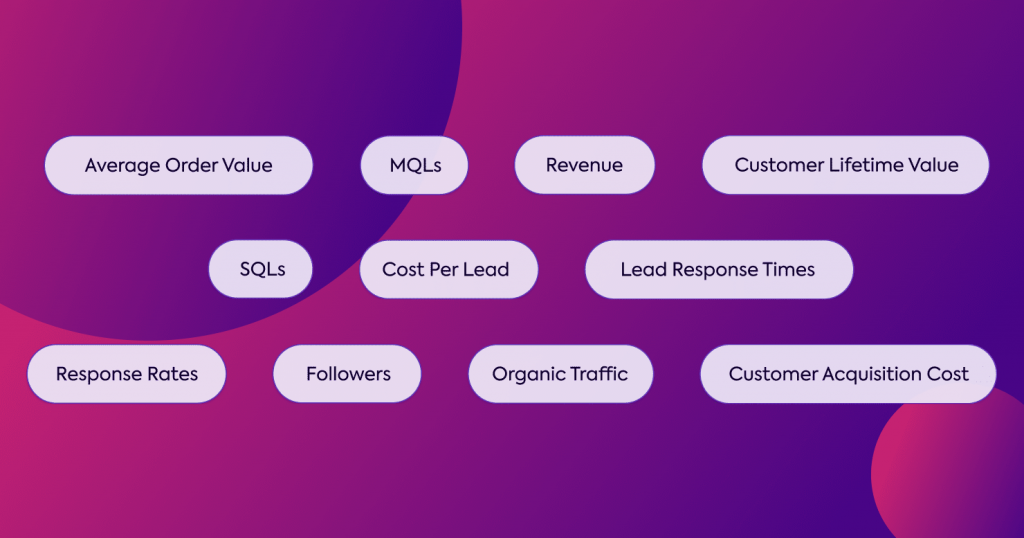
Set Key Performance Indicators (KPIs)
Tracking the success of your brand launch is essential for evaluating your marketing efforts and making data-driven decisions for future campaigns. Key Performance Indicators (KPIs) help you to measure progress and determine whether you are meeting your objectives. Here are some important KPIs to consider when tracking the success of your brand launch:
- Website traffic and engagement: Your website is crucial to your brand's online presence. Tracking website traffic, bounce rates, and engagement metrics such as time spent on the site, pages viewed, and conversion rates can provide insight into the effectiveness of your website and the success of your brand launch.
- Social media followers and interactions: Social media can effectively build brand awareness and engage with your target audience. Measuring social media metrics such as follower growth, engagement rates, and reach can help you understand your social media marketing efforts impact and identify improvement opportunities.
- Email open and click-through rates: Email marketing can be valuable for nurturing leads and generating sales. Tracking email metrics such as open rates, click-through rates, and conversion rates can help you evaluate your email campaigns' effectiveness and identify improvement opportunities.
- Sales or lead generation: Ultimately, the success of your brand launch will depend on your ability to generate sales or leads. Tracking metrics such as conversion rates, revenue generated, or lead acquisition can provide insight into the effectiveness of your marketing and sales strategies.
When setting KPIs, it's important to choose metrics that are relevant to your goals and objectives. It would help if you also established a baseline for each metric and set targets for improvement. By regularly tracking and evaluating your KPIs, you can make data-driven decisions and optimise your marketing efforts for maximum impact.
Monitor and Analyse Performance
Monitoring and analysing your performance data is a critical step in assessing the success of your brand launch and identifying areas for improvement. By regularly reviewing performance data, you can gain valuable insights into the effectiveness of your marketing efforts and make data-driven decisions to optimise your strategy. Here are some tools to consider when monitoring and analysing your performance data:
- Google Analytics: Google Analytics is a powerful tool for tracking website performance metrics such as traffic, bounce, and conversion rates. It can also provide insights into user behaviour, such as time spent on the site and pages viewed. By regularly reviewing this data, you can identify trends and patterns that can help you to optimise your website and improve user experience.
- Social media analytics: Social media platforms provide tools that can help you track metrics such as follower growth, engagement rates, and reach. By monitoring this data, you can identify which types of content and tactics are most effective for engaging your audience and adjust your strategy accordingly.
- Email marketing analytics: Email marketing platforms like ActiveCampaign and SendGrid provide analytics tools that can help you to track metrics such as open rates, click-through rates, and conversion rates. By analysing this data, you can identify which types of emails and messaging are most effective for nurturing leads and generating sales.
- CRM data: Customer Relationship Management (CRM) software can provide insights into customer behaviour and preferences. By analysing this data, you can identify patterns and trends that inform your marketing and sales strategies.
When analysing performance data, it's essential to look beyond surface-level metrics and dig deeper to identify underlying trends and patterns. You should also establish benchmarks and targets for each metric and regularly evaluate your progress toward these goals. By taking a data-driven approach to monitoring and analysing performance, you can continuously improve your marketing efforts and achieve tremendous success with your brand launch.
Optimise Your Strategy

Optimising your branding and marketing efforts is a continuous process that requires ongoing analysis and refinement. By identifying opportunities for improvement based on your research, you can make data-driven decisions to optimise your strategy and achieve tremendous success with your brand launch. Here are some possible actions to consider when optimising your process:
- Refining your messaging or content strategy: Your messaging and content process is critical in shaping your brand identity and engaging your target audience. Based on your performance analysis, you may identify areas where your messaging or content must resonate with your audience. Refining your messaging or content strategy can help you to communicate your brand value better and engage your audience more effectively.
- Adjusting your marketing channels: The marketing channels you choose to use significantly impact the success of your brand launch. Based on your performance analysis, you may identify channels that could be performing better than others or need to reach your target audience effectively. Adjusting your marketing channels can help you to reach your target audience more effectively and optimise your marketing spend.
- Retargeting or refining your audience: Your target audience is the foundation of your marketing strategy, and refining or retargeting your audience can help you reach and engage them better. Based on your performance analysis, you may identify segments of your target audience that are more or less engaged with your brand. Refining your audience targeting can help you to optimise your marketing efforts and improve conversion rates.
- Improving your product or service offerings: The quality and value of your product or service offerings directly impact your brand success. Based on your performance analysis, you may identify areas where your offerings are falling short or where there is an opportunity to innovate. Improving your product or service offerings can help you meet your target audience's needs and desires and drive greater success with your brand launch.
Optimising your branding and marketing efforts requires a continuous commitment to monitoring and analysing your performance data and a willingness to make data-driven decisions and take action to improve your strategy. By taking a proactive approach to optimisation, you can continuously improve your brand performance and achieve success with your launch.
Conclusion
Launching a brand that stands out from the competition requires a thoughtful and strategic approach. By defining your brand's identity, developing a cohesive visual identity, crafting consistent messaging, and planning a buzz-worthy launch strategy, you can create a memorable brand that resonates with your target audience. Remember to monitor, measure, and optimise your efforts to ensure the continued success of your brand. With dedication and persistence, you can launch a brand that leaves a lasting impression and drives business growth.
Last update on 2025-07-02 / Affiliate links / Images from Amazon Product Advertising API

